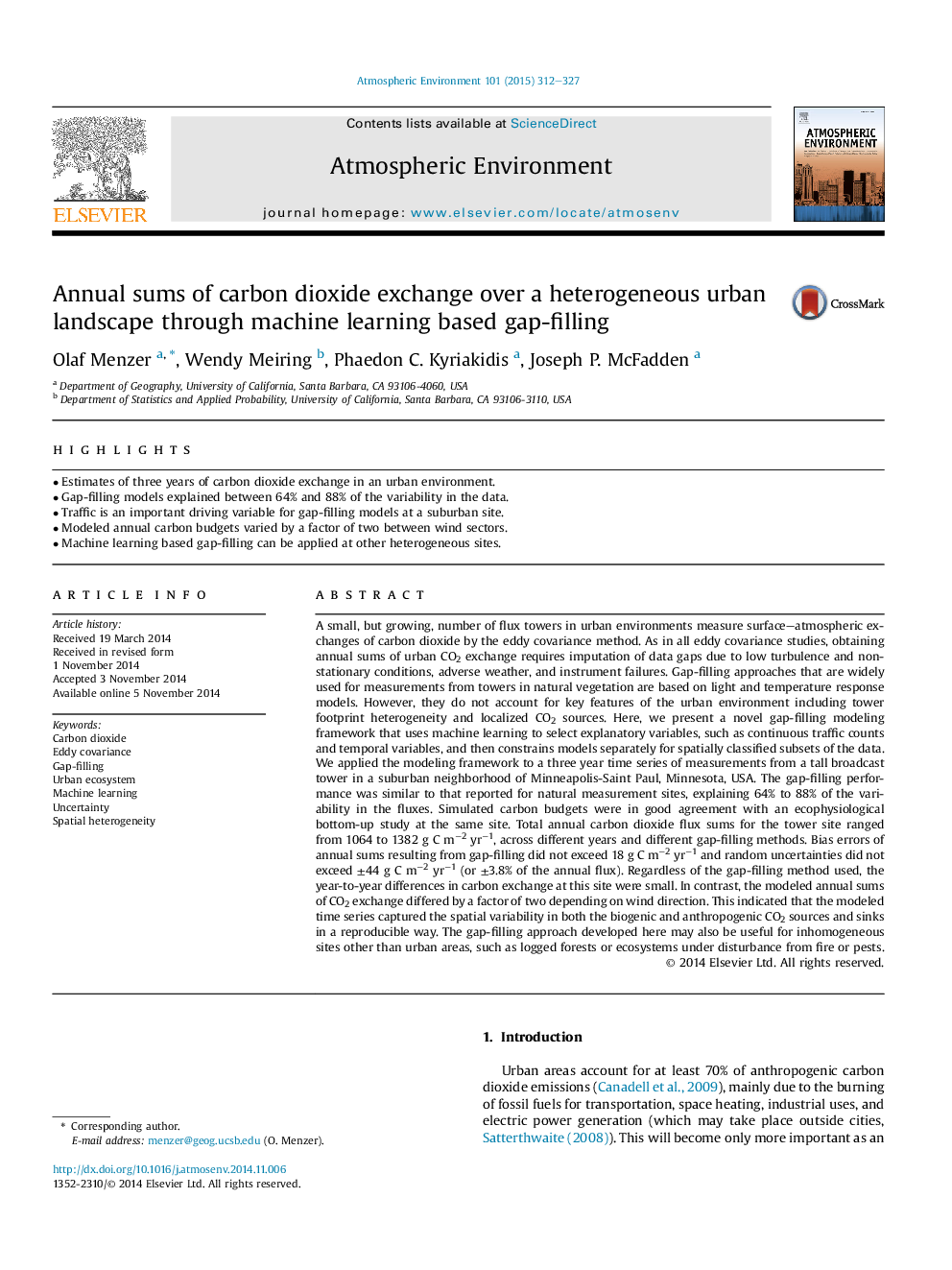| کد مقاله | کد نشریه | سال انتشار | مقاله انگلیسی | نسخه تمام متن |
|---|---|---|---|---|
| 6338641 | 1620370 | 2015 | 16 صفحه PDF | دانلود رایگان |
- Estimates of three years of carbon dioxide exchange in an urban environment.
- Gap-filling models explained between 64% and 88% of the variability in the data.
- Traffic is an important driving variable for gap-filling models at a suburban site.
- Modeled annual carbon budgets varied by a factor of two between wind sectors.
- Machine learning based gap-filling can be applied at other heterogeneous sites.
A small, but growing, number of flux towers in urban environments measure surface-atmospheric exchanges of carbon dioxide by the eddy covariance method. As in all eddy covariance studies, obtaining annual sums of urban CO2 exchange requires imputation of data gaps due to low turbulence and non-stationary conditions, adverse weather, and instrument failures. Gap-filling approaches that are widely used for measurements from towers in natural vegetation are based on light and temperature response models. However, they do not account for key features of the urban environment including tower footprint heterogeneity and localized CO2 sources. Here, we present a novel gap-filling modeling framework that uses machine learning to select explanatory variables, such as continuous traffic counts and temporal variables, and then constrains models separately for spatially classified subsets of the data. We applied the modeling framework to a three year time series of measurements from a tall broadcast tower in a suburban neighborhood of Minneapolis-Saint Paul, Minnesota, USA. The gap-filling performance was similar to that reported for natural measurement sites, explaining 64% to 88% of the variability in the fluxes. Simulated carbon budgets were in good agreement with an ecophysiological bottom-up study at the same site. Total annual carbon dioxide flux sums for the tower site ranged from 1064 to 1382 g C mâ2 yrâ1, across different years and different gap-filling methods. Bias errors of annual sums resulting from gap-filling did not exceed 18 g C mâ2 yrâ1 and random uncertainties did not exceed ±44 g C mâ2 yrâ1 (or ±3.8% of the annual flux). Regardless of the gap-filling method used, the year-to-year differences in carbon exchange at this site were small. In contrast, the modeled annual sums of CO2 exchange differed by a factor of two depending on wind direction. This indicated that the modeled time series captured the spatial variability in both the biogenic and anthropogenic CO2 sources and sinks in a reproducible way. The gap-filling approach developed here may also be useful for inhomogeneous sites other than urban areas, such as logged forests or ecosystems under disturbance from fire or pests.
Journal: Atmospheric Environment - Volume 101, January 2015, Pages 312-327
